Unlock the nutritional secrets of 10 delightful dry fruits! Discover their health benefits, smart snacking tips, and ways to incorporate them into your daily diet. Snack smart, live healthy!
Welcome, health enthusiasts, to a journey of taste and nutrition as we explore the wonderful world of dry fruits! Packed with a powerhouse of nutrients, these tiny treats aren’t just delicious; they also bring a host of health benefits to the table. In this blog post, we’ll delve into the goodness of 10 dry fruits that not only satisfy your taste buds but also contribute to your overall well-being.
From the crunchy delight of almonds to the sweet richness of dates, each dry fruit has its unique flavour profile and nutritional offerings. Whether you’re a fitness fanatic looking for a natural energy boost or someone with a sweet tooth seeking a healthier alternative, there’s a dry fruit for everyone.
So, join us on this flavorful adventure as we unwrap the goodness of these nutrient-packed wonders, exploring their names, tastes, and the incredible health benefits they bring to the plate. Let’s embrace the joy of healthy snacking and discover why these 10 dry fruits deserve a special place in your daily diet!
10 Dry fruits name in English and hindi
| Serial Number | Picture | English Name | Hindi Name |
| 1 |  | Almonds | बादाम |
| 2 | 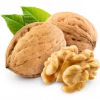 | Walnuts | अखरोट |
| 3 |  | Cashews | काजू |
| 4 | 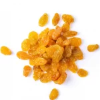 | Raisins | किशमिश |
| 5 | 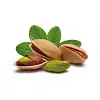 | Pistachios | पिस्ता |
| 6 |  | Dates | खजूर |
| 7 | 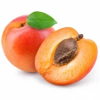 | Apricots | खुबानी |
| 8 |  | Figs | अंजीर |
| 9 | 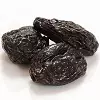 | Prunes | सूखे आलू |
| 10 | 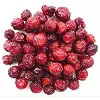 | Cranberries | क्रैनबेरीज़ |
Dive into Delight: Exploring the Nutritional Wonders of 10 Common Dry Fruits
Certainly! Here’s a brief explanation of 10 types of commonly consumed dry fruits:
- Almonds: Almonds are nutrient-packed nuts, rich in vitamin E, healthy fats, and protein. They promote heart health and are a great source of antioxidants.
- Walnuts: Walnuts are known for their brain-boosting benefits due to omega-3 fatty acids. They also provide protein, fibre, and various vitamins and minerals.
- Cashews: Cashews are kidney-shaped nuts high in iron and zinc. They contribute to energy production, and immune health, and support healthy skin.
- Raisins: Raisins are dried grapes, packed with natural sugars, fibre, and antioxidants. They are a quick energy source and promote digestive health.
- Pistachios: Pistachios are heart-healthy nuts that offer fibre, protein, and healthy fats. They also contain antioxidants and promote blood vessel health.
- Dates: Dates are sweet dried fruits with a high natural sugar content. They are rich in fibre, potassium, and various vitamins, making them excellent energy boosters.
- Apricots: Dried apricots are a good source of vitamin A, potassium, and fibre. They support eye health, immune function, and digestive well-being.
- Figs: Figs are nutrient-dense fruits with fibre, vitamins, and minerals. They are beneficial for digestive health and provide natural sweetness.
- Prunes: Prunes are dried plums known for their digestive benefits. They are high in fibre, sorbitol, and antioxidants, promoting regular bowel movements.
- Cranberries: Dried cranberries are tart and sweet, containing antioxidants and vitamin C. They contribute to urinary tract health and support the immune system
Cultivating Goodness: A Journey into the Growing Regions of 10 Nutrient-Packed Dry Fruits
- Almonds: Almond trees thrive in well-drained soil with a warm climate. They require pollination for nut production, and California is a major almond-producing region.
- Walnuts: Walnut trees grow in temperate climates with rich, well-drained soil. They need cold winters for proper dormancy and are cultivated in regions like California and Asia.
- Cashews: Cashew trees are tropical, flourishing in warm climates with well-drained soil. Cashew nuts develop outside the fruit and are primarily grown in countries like India and Vietnam.
- Raisins: Raisins come from dried grapes. Grapevines are cultivated in various climates, with major production in countries like the United States, Turkey, and Iran.
- Pistachios: Pistachio trees thrive in arid climates with well-drained soil. They are mainly grown in regions with hot summers, such as California, Iran, and Turkey.
- Dates: Date palms prefer hot, arid climates. They are extensively cultivated in regions like the Middle East, North Africa, and parts of California.
- Apricots: Apricot trees require a temperate climate with well-drained soil. Major cultivation areas include Turkey, Iran, and regions with a Mediterranean climate.
- Figs: Fig trees grow well in warm, Mediterranean climates with ample sunlight. They are cultivated in countries like Turkey, Greece, and California.
- Prunes: Prunes are dried plums and plum trees flourish in various climates. Major producers include the United States, France, and China.
- Cranberries: Cranberries grow in acidic, sandy soils and are native to North America. They are cultivated in states like Wisconsin and Massachusetts, often in flooded fields.
Growing Strong: How Good Nutrition Boosts Teenagers’ Well-Being
Certainly! The benefits for teenagers encompass various aspects of physical, mental, and emotional well-being. Here are some key benefits for teenagers:
Physical Health
- Growth and Development: Proper nutrition during the teenage years supports healthy growth, development, and the formation of strong bones and muscles.
- Energy Levels: A balanced diet provides the necessary energy for the active lifestyle of teenagers, helping them excel in sports and daily activities.
Mental and Cognitive Health
- Brain Development: Essential nutrients, such as omega-3 fatty acids and antioxidants found in certain foods, support optimal brain development and cognitive function.
- Concentration and Focus: Proper nutrition is linked to improved concentration, memory, and overall cognitive performance, crucial for academic success.
Emotional Well-being
- Mood Regulation: Nutrient-rich foods contribute to stable blood sugar levels, which can positively impact mood and emotional well-being.
- Stress Management: Adequate nutrition supports the body’s ability to cope with stress, helping teenagers navigate the challenges of adolescence.
- Prevention of Health Issues: Healthy Habits: Establishing good dietary habits during adolescence can contribute to a lifelong commitment to health, potentially preventing future issues such as obesity and related conditions.
Social and Emotional Development:
- Self-Esteem: Feeling good physically contributes to positive self-esteem, fostering a healthy body image and a positive outlook on oneself.
- Social Confidence: Proper nutrition supports physical health, which can positively impact social interactions, confidence, and the ability to engage in various activities.
- Formation of Lifelong Habits: Nutritional Education: Learning about nutrition during the teenage years helps in developing a better understanding of the importance of balanced eating, laying the foundation for a lifetime of healthy habits.
- Sleep Quality: Sleep Regulation: A well-balanced diet contributes to better sleep quality, essential for the growth and overall well-being of teenagers.
Eating Right for Teens: What and How Much Every Day
Here are some general guidelines for daily intake of essential nutrients based on the recommendations by health authorities:
Calories
Caloric needs vary, but on average, a teenager may require around 1,800 to 2,400 calories per day. However, individual needs can be higher or lower depending on factors like activity level and metabolism.
Protein
Teens generally need about 0.8 to 1 gram of protein per kilogram of body weight. For example, a teenager weighing 60 kg would need approximately 48 to 60 grams of protein per day.
Carbohydrates
Carbohydrate needs can make up about 45-65% of total daily calories. For an average 2,000-calorie diet, this translates to 225 to 325 grams of carbohydrates per day.
Fat
Dietary fat should make up about 20-35% of total daily calories. For a 2,000-calorie diet, this is around 44 to 77 grams of fat per day.
Fibre
The recommended daily intake of fibre for teenagers is around 25 to 38 grams, depending on age and gender.
Vitamins and Minerals
These recommendations can vary widely. It’s generally best to meet vitamin and mineral needs through a varied and balanced diet. Some key examples include:
- Calcium: 1,300 mg per day for teens aged 9-18.
- Iron: 11-15 mg per day for teens depending on gender.
- Vitamin D: 600 IU per day for teens aged 9-18.
Hydration
Adequate water intake is crucial. The general recommendation is around 8 cups (64 ounces) per day, but individual needs can vary based on factors like climate and physical activity.
Making Delicious Dried Fruits at Home and Tips for Store-Bought Goodies!
Making dry fruits at home is a simple process, primarily involving drying fresh fruits to remove their water content. Here’s a basic guide on how to make dried fruits at home:
Homemade Dried Fruits
- Ingredients: Fresh fruits of your choice (e.g., apples, apricots, bananas, grapes, or berries)
- Instructions: Choose Fresh Fruits:
- Select ripe and fresh fruits. Different fruits may require slightly different preparation methods.
- Wash and Slice: Wash the fruits thoroughly, and slice them uniformly. The thickness of the slices can vary depending on your preference. Thinner slices will dry faster.
- Pre-Treat (Optional): Some fruits, like apples and bananas, may benefit from a pre-treatment to prevent browning. You can soak them briefly in a mixture of water and lemon juice.
- Dehydrate: There are several methods to dehydrate fruits:
- Oven Drying: Place the sliced fruits on a baking sheet in a single layer. Set the oven to its lowest temperature and leave the door slightly ajar to allow moisture to escape. Check and flip the fruits occasionally until they are dried to your liking.
- Food Dehydrator: Arrange the fruit slices on the dehydrator trays and follow the manufacturer’s instructions for drying times.
- Sun Drying: In some climates, you can sun-dry fruits by placing them on trays in direct sunlight. This method takes longer and requires consistent sunny weather.
- Check for Dryness:
- Fruits are adequately dried when they are leathery and slightly pliable. They should not feel sticky or wet.
- Cool and Store:
- Allow the dried fruits to cool completely. Store them in airtight containers or sealed bags in a cool, dry place.
Store-Bought Dried Fruits
If you prefer the convenience of buying dried fruits, you can find them readily available in supermarkets or health food stores. When purchasing, look for options without added sugars or preservatives for a healthier choice. You can enjoy store-bought dried fruits as snacks, in cereals, or as ingredients in various recipes.
Whether made at home or bought, dried fruits are a delicious and nutritious addition to your diet. They provide natural sweetness and are rich in vitamins, minerals, and fibre.
Conclusion
In conclusion, the world of dry fruits unfolds a treasure trove of nutritional wonders that can greatly enhance our overall well-being. From the protein-packed almonds to the sweet energy boost of dates, each of these dried delights brings its unique set of benefits to the table.
Incorporating a variety of these dry fruits into our daily diet not only satisfies our taste buds but also ensures a diverse intake of essential nutrients. Whether you’re seeking heart-healthy fats, a natural source of energy, or a fibre-rich snack, the assortment of almonds, walnuts, cashews, raisins, pistachios, dates, apricots, figs, prunes, and cranberries has you covered.
As we savour the deliciousness of these nutrient-packed treats, let’s appreciate the simplicity and richness they bring to our meals and snacks. Whether enjoyed on their own or as versatile ingredients in recipes, the nutritional benefits of these dry fruits make them a valuable addition to a wholesome and balanced lifestyle. So, snack smart, embrace the goodness, and relish the journey towards a healthier, happier you!
FAQ’s
What are dry fruits?
Dry fruits are fruits from which the majority of the water content has been removed, either naturally through sun-drying or artificial dehydration methods.
Are all dry fruits naturally dried?
No, some dry fruits are commercially dried using methods like air-drying, sun-drying, or mechanical dehydration.
What nutritional benefits do dry fruits offer?
Dry fruits are rich in vitamins, minerals, fibre, and antioxidants. They provide essential nutrients and energy.
Can I eat dry fruits every day?
Yes, moderate consumption of dry fruits can be a healthy addition to your daily diet, providing a range of nutrients.
Are there any health concerns related to eating too many dry fruits?
While dry fruits are nutritious, they are also calorie-dense. Moderation is key to avoiding excess calorie intake.
Can dry fruits help in weight management?
Yes, dry fruits can be a satisfying snack that helps curb hunger, but portion control is crucial for weight management.
Are all dry fruits equally nutritious?
No, different dry fruits offer varying nutritional profiles. It’s beneficial to include a variety for a broad range of nutrients.
Are store-bought dried fruits healthy?
It depends on the product. Look for options without added sugars or preservatives for a healthier choice.
Can dry fruits be included in a weight loss diet?
Yes, in moderation. Dry fruits are nutrient-dense, providing essential nutrients in smaller quantities.
Are dried fruits a good source of fibre?
Yes, many dried fruits, such as prunes and raisins, are excellent sources of dietary fibre.
Do dry fruits have natural sugars?
Yes, dry fruits contain natural sugars, but they also provide fibre, which helps in moderating blood sugar levels.
Can individuals with diabetes consume dry fruits?
Yes, in controlled portions. Individuals with diabetes should monitor their carbohydrate intake.
What is the best way to store dry fruits at home?
Store dry fruits in airtight containers in a cool, dark place to maintain their freshness.
Can dry fruits be used in cooking and baking?
Yes, dry fruits can enhance the flavour and nutritional content of various dishes, including salads, desserts, and baked goods.

Balaji KVR, a passionate botanist and plant enthusiast with a strong academic background in plant biology. My journey at Botany Lane Greenhouse has been nothing short of exhilarating. Here, I delve deep into the world of plants, conducting extensive research, identifying unique species, and ensuring their optimal growth.
My expertise extends to propagation techniques, disease management, and meticulous plant care. I’m dedicated to creating the perfect environment for plants, focusing on maintaining precise conditions and utilizing innovative methods. Beyond my green endeavors, I actively engage in educational initiatives, workshops, and tours, aiming to foster a deeper understanding and love for the fascinating botanical realm.


